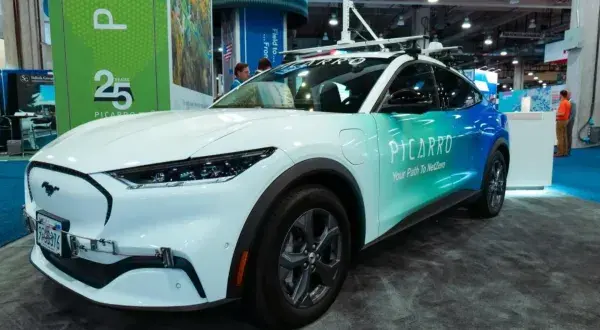This article will serve as a guide to selecting a suitable vehicle for use in Picarro AMLD drive survey usage.
Our minimum requirements are quite simple, but there are some larger considerations to make when choosing a host vehicle. The Picarro system needs a roughly 30”x30”x30” cube of storage space to house our Mod1/Mod2 hardware stack. Our roof sensors mount on Thule ProBar cross bars, so we need either existing raised roof rails or the host vehicle needs to have a vehicle-specific Thule rack mount option available.
Interior Space
If the chosen vehicle is too small (Jeep Compass), it may be required that the vehicle’s second row seat remain folded flat for system cable management. There are vacuum tubes run between the modules that can only bend so far if they contact the backside of the seats. Strain on cable connections potentially rattling/vibrating cables loose is also a concern. The loss of the second-row seating could be a concern for potential passenger usage in demo rides to C suite staff, crew transport for daytime leak pinpointing or emergency survey situations. Further, the simple existence of a vertical seat-back has shown to be a good noise barrier between the Picarro vacuum pumps and the driver.
Driver comfort is another interior space concern. These vehicles may be driven for 10+ hours at a time, and driver fatigue/comfort should be considered.
Lastly, if the vehicle is to also be used for leak investigation and will potentially need to also carry tools and equipment related to that duty, more additional interior space may be warranted. (PG&E uses Ford Explorers and manages to also carry a bar hole in all/most survey vehicles)
Offset (Ford Escape) vs non-offset (Ford Mach-E) system stacks due to sloping rooflines and limited rear cargo space:


Vehicle Dynamics
Picarro drive protocol is “two pass,” meaning a vehicle should cover each street in both directions, where and when possible. This is done in multiple ways depending on the individual utility’s driver safety rules on U-turns, right-hand turn preference, zero reversing, etc.
Vehicle turning radius and wheelbase could be a time cost or efficiency concern if U-turns are used in place of three point turns with reverse.
Fuel Efficiency
Many of the common crossover SUVs selected for drive survey usage are offered in multiple engine or drivetrain configurations. Gas engines hybrid electric, full electric EVs and even hydrogen/CNG vehicles have all been outfitted with Picarro systems.
Most gas assets are in more dense areas, where covering the road network requires a lot of stop and go, medium speed driving. Hybrids and EVs do well in this usage environment with regenerative braking abilities to recharge their batteries. However, the distance a vehicle may need to travel in order to arrive at a designated survey map from a utility headquarter or fleet garage can quickly erode the efficacy of even today’s “long range” EVs. If a full EV is desired, then careful consideration to total coverage area and potential range should be taken. This should include the potential reality that an EV vehicle freshly depleted from a nighttime drive survey may not have charge/range available the next day to conduct a daytime survey for any supplemental use cases.
Each operator should do their own due diligence on the ROI of more efficient but higher priced Hybrid drivetrains vs their intended usage/life expectancy. For example, if company policy is to replace vehicle at 5 years (which happens to be the Picarro contract term), then a hybrid may have a hard time clawing back the higher initial purchase price.


Loose ranking of currently installed vehicles:
- Ford Escape Hybrid (upscale interior quality due to higher trim packages, ease of installation, room to offset the stack for tool/gear storage)
- Ford Escape non-Hybrid
- Ford Edge
- Ford Explorer (approaching maneuverability concerns, but more durable than escape/edge sized SUVs, citing Centerpoint)
- Nissan NV200 van (commercial “city” van, great maneuverability, easy installation but spartan. Limited driver feedback so far)
- Ford Mustang Mach-E EV* (poorly shaped storage area, no stack offset for tool/gear storage, otherwise shares qualities/chassis with the Escape)
- Jeep Compass (slightly too small, no stack offset for tool storage)
- Ford F150 Lightning EV* (maneuverability, range vs charge time)
Categories
Would you like to read more? Register for the Picarro Gas Community! Gain unlimited access to restricted content including playbooks, technical guides and conference panels.




